
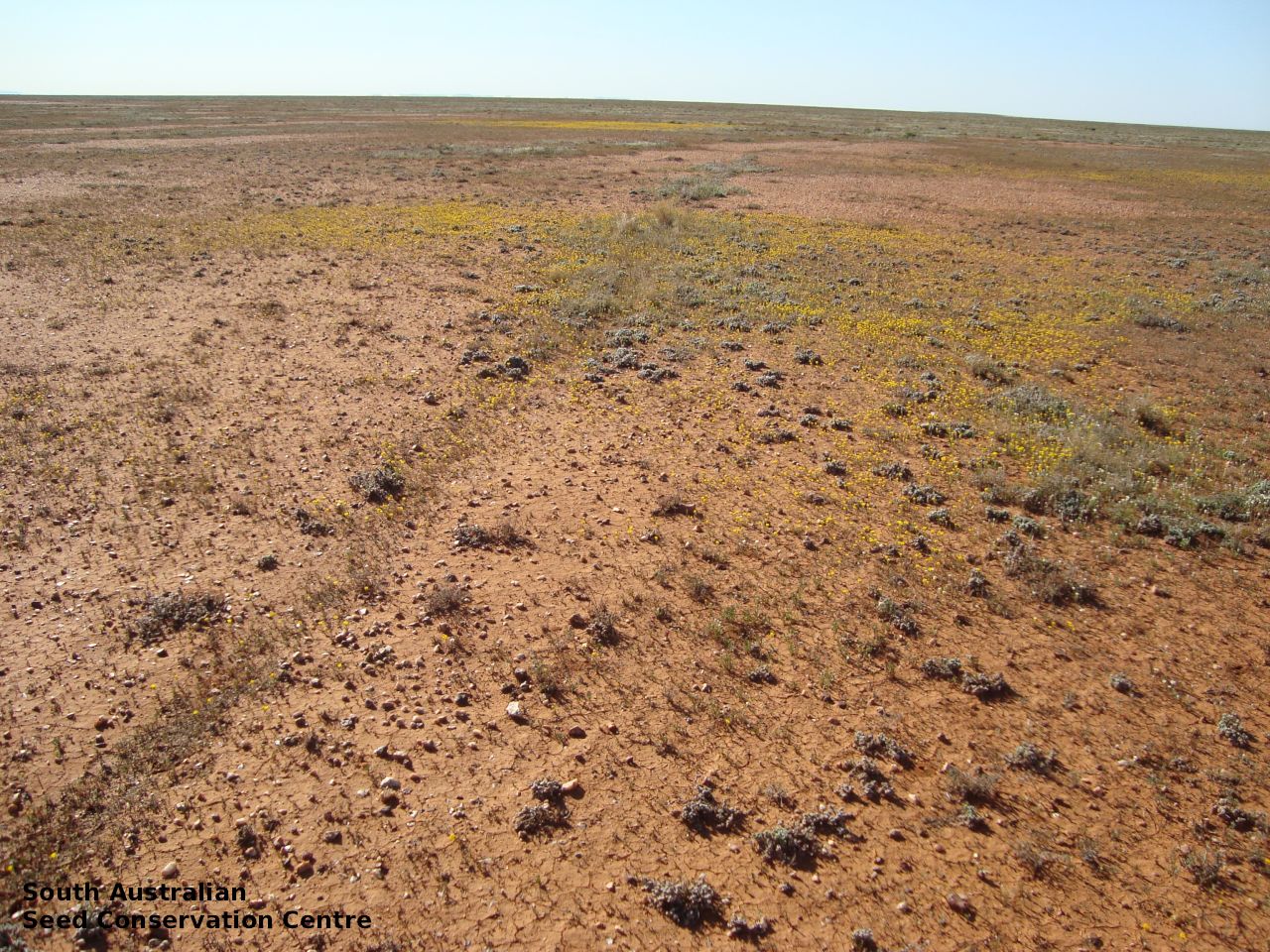

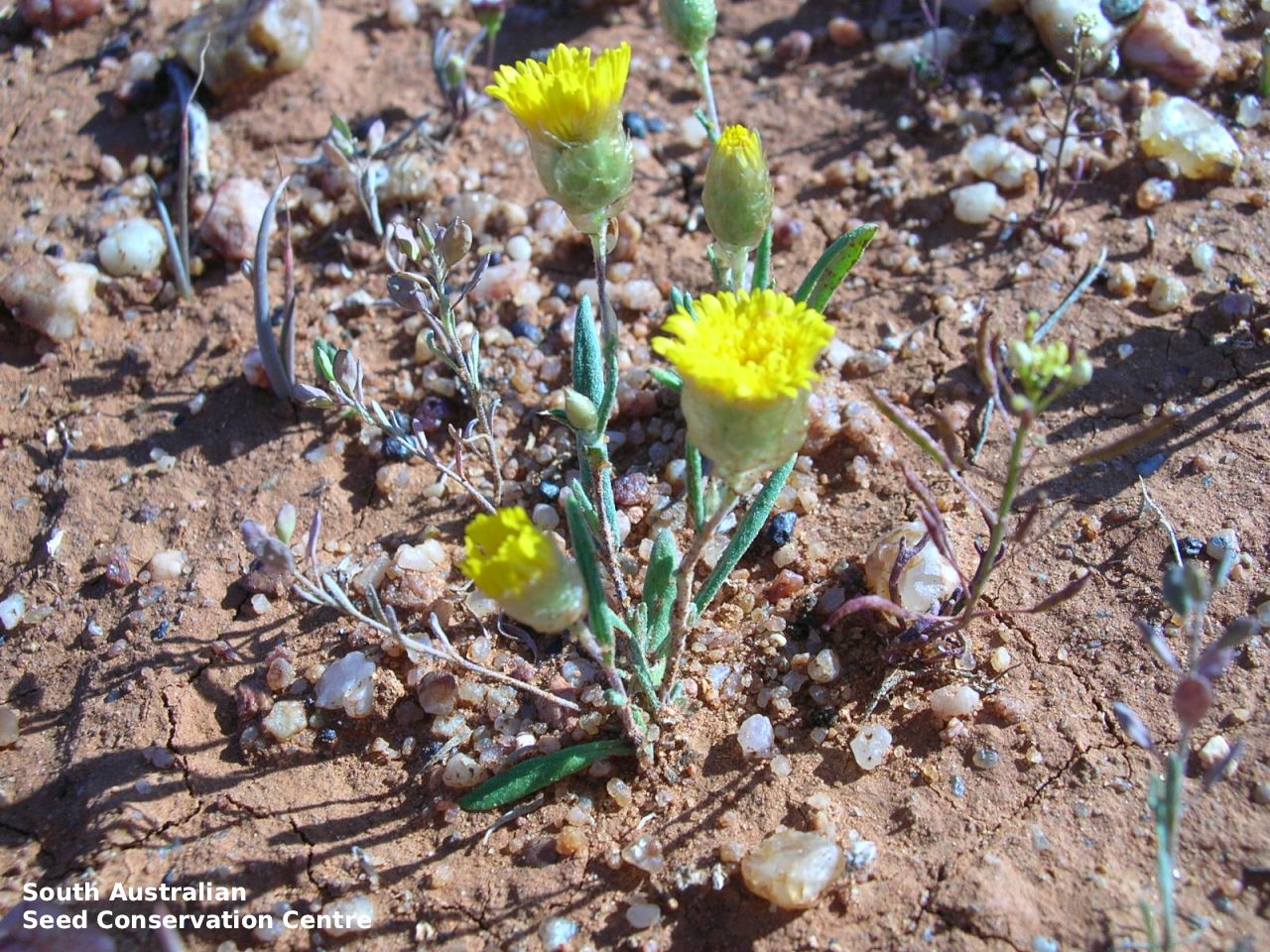
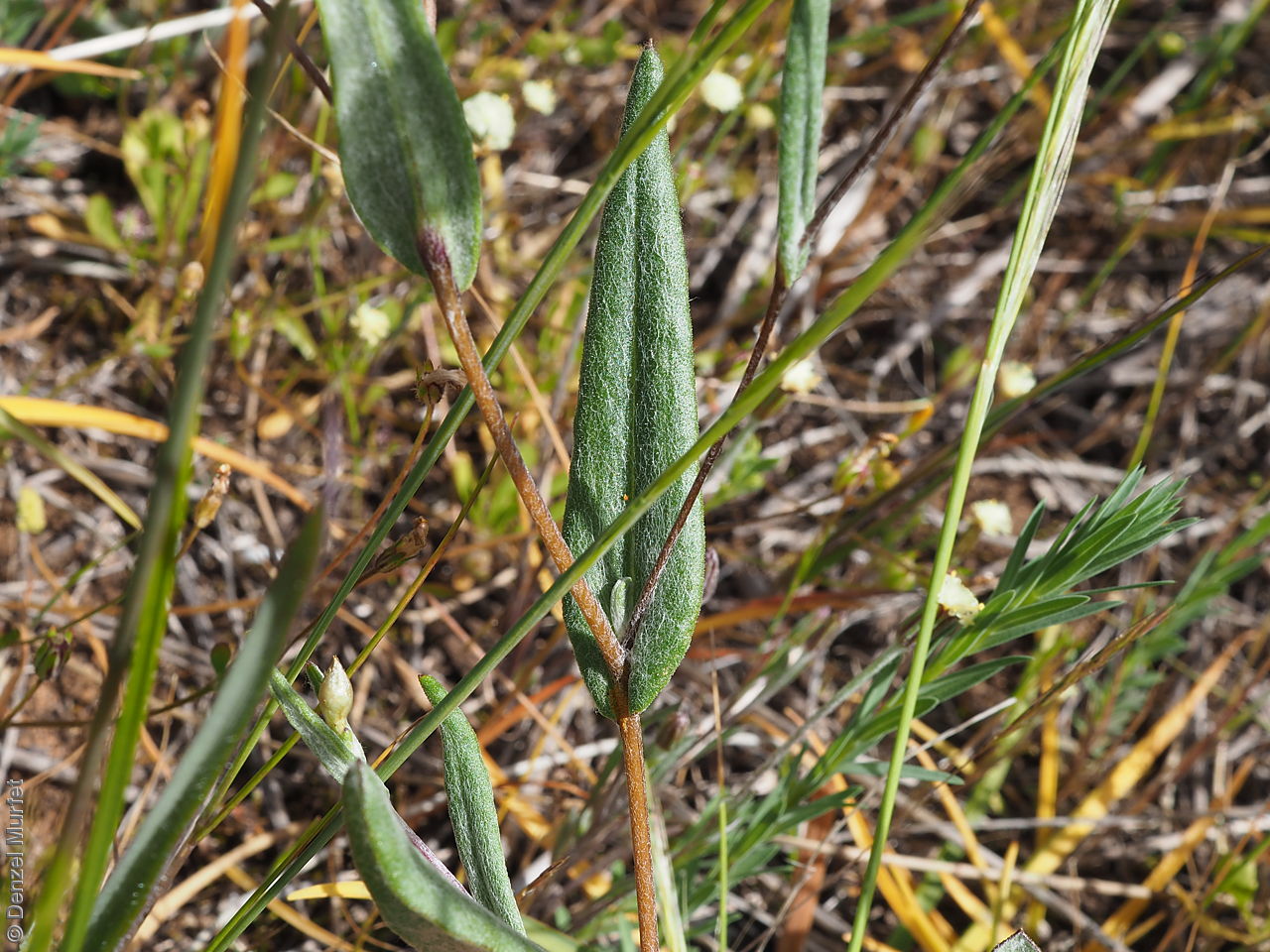
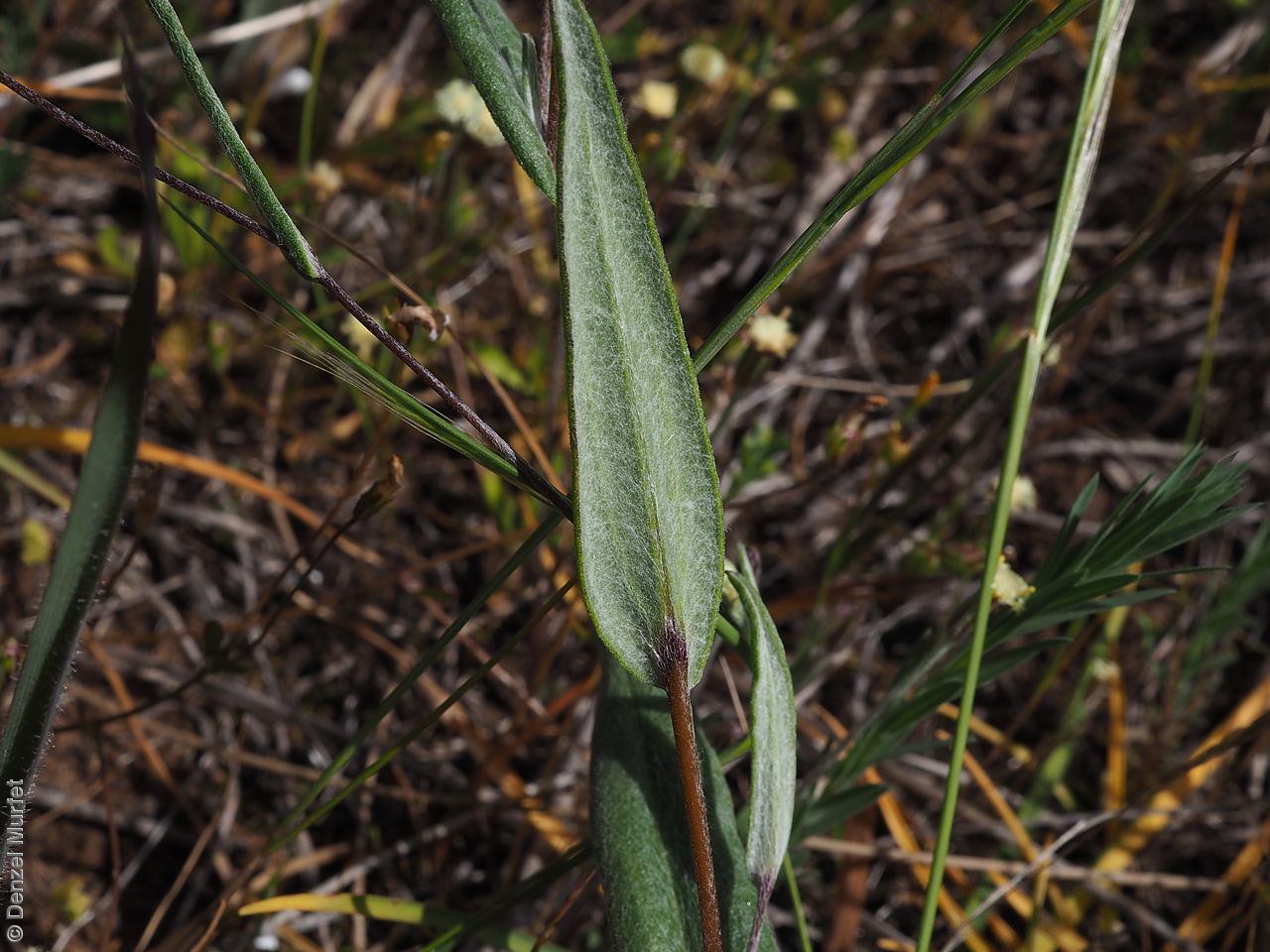
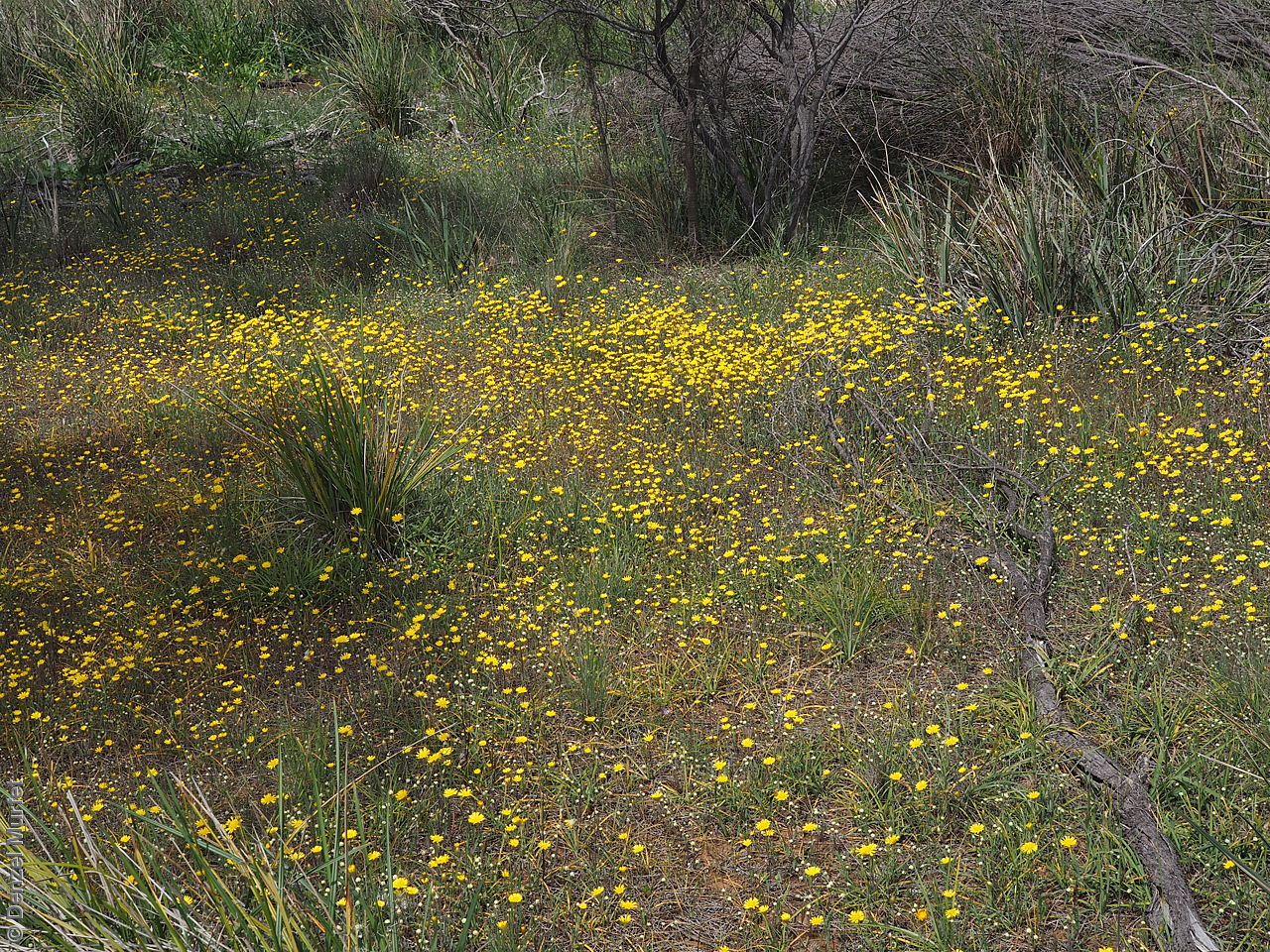
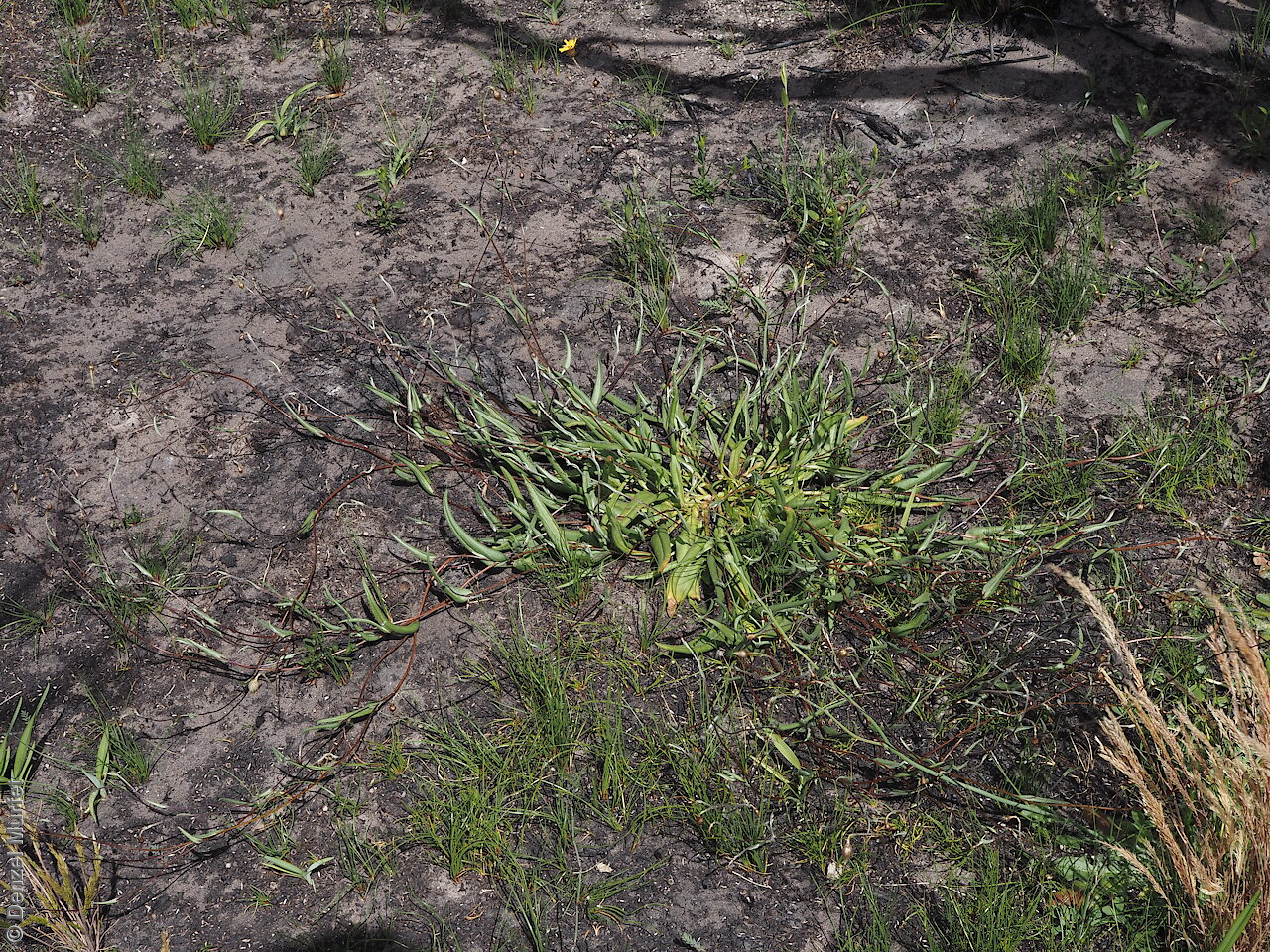
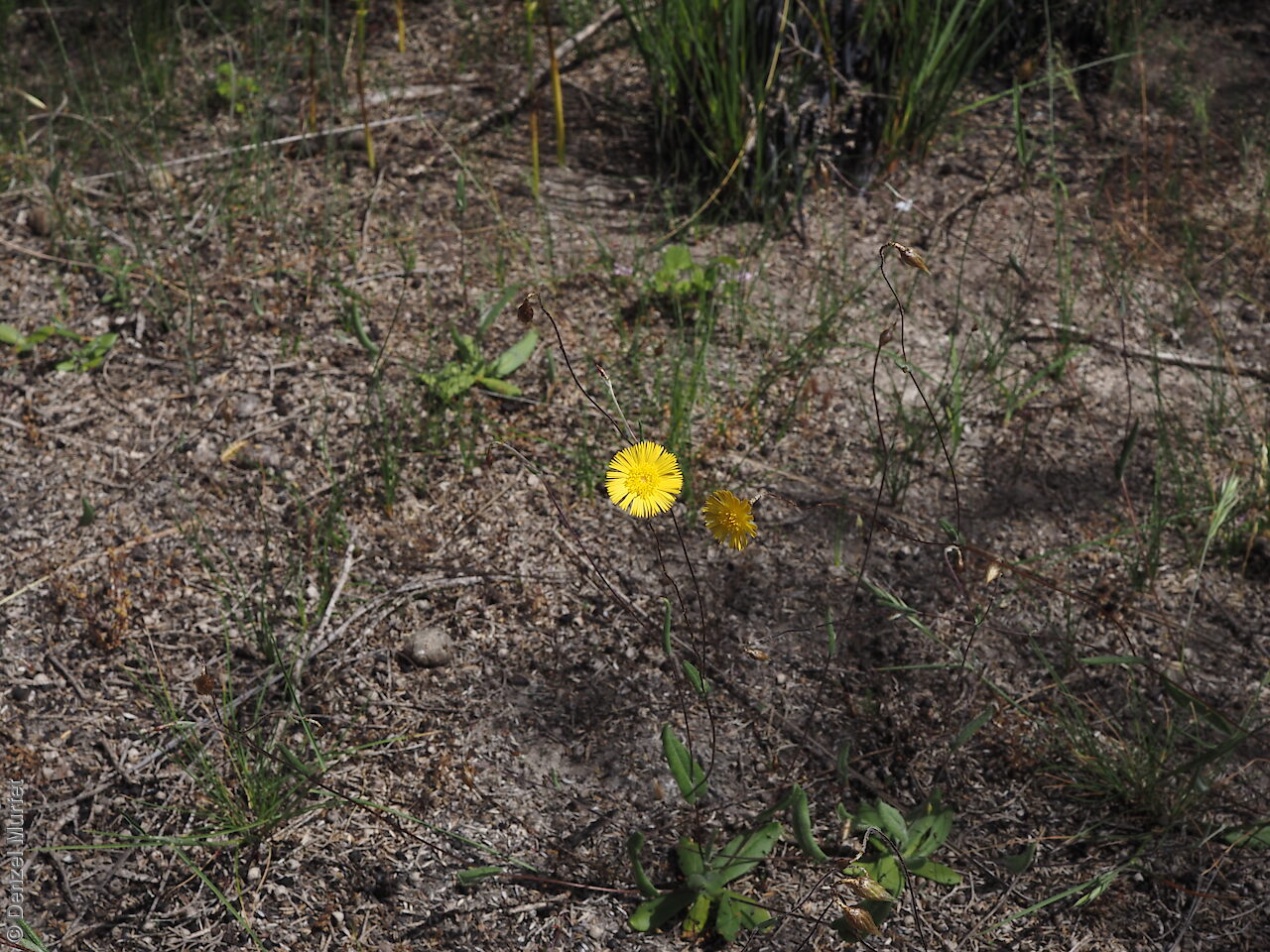
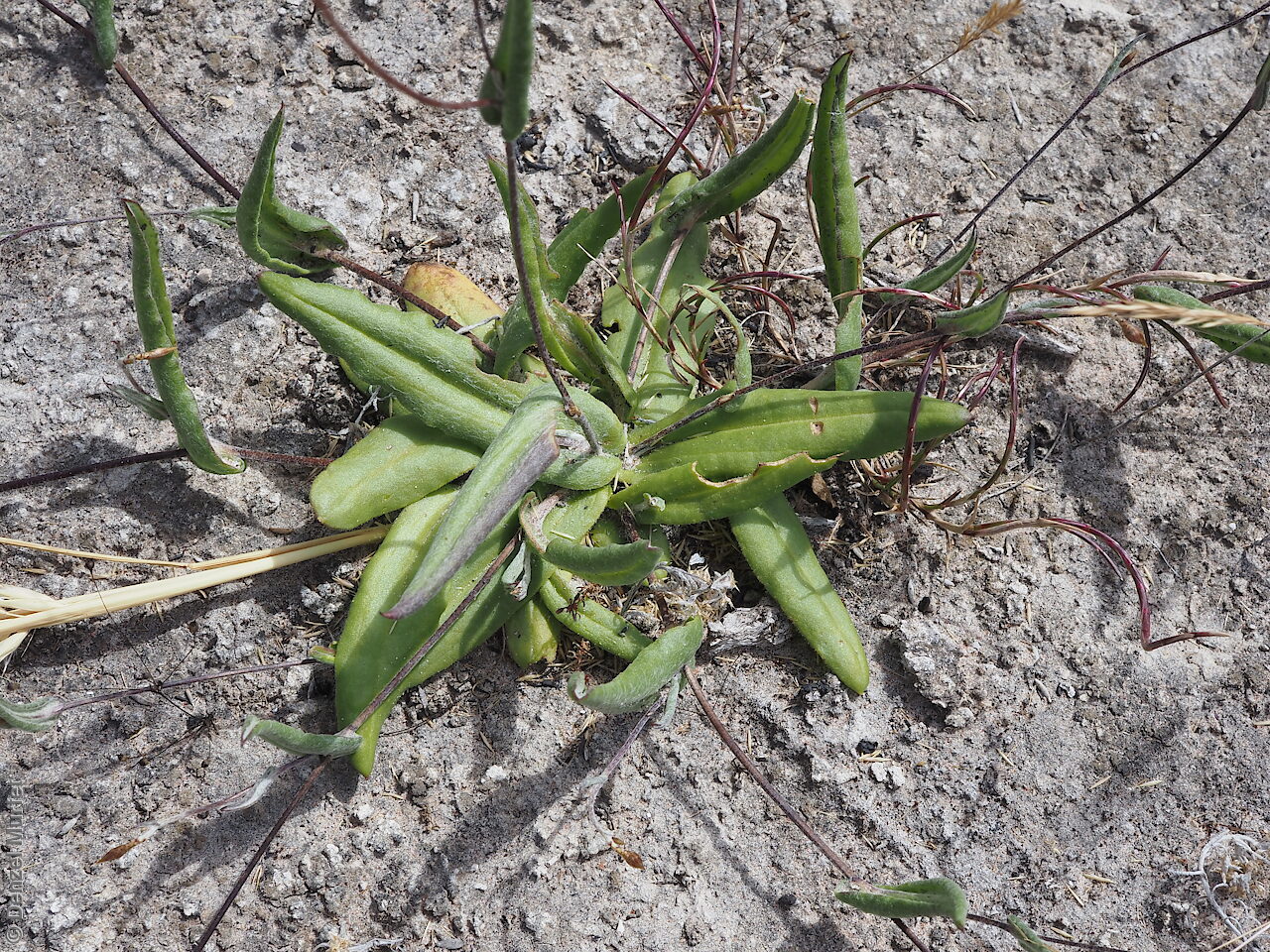
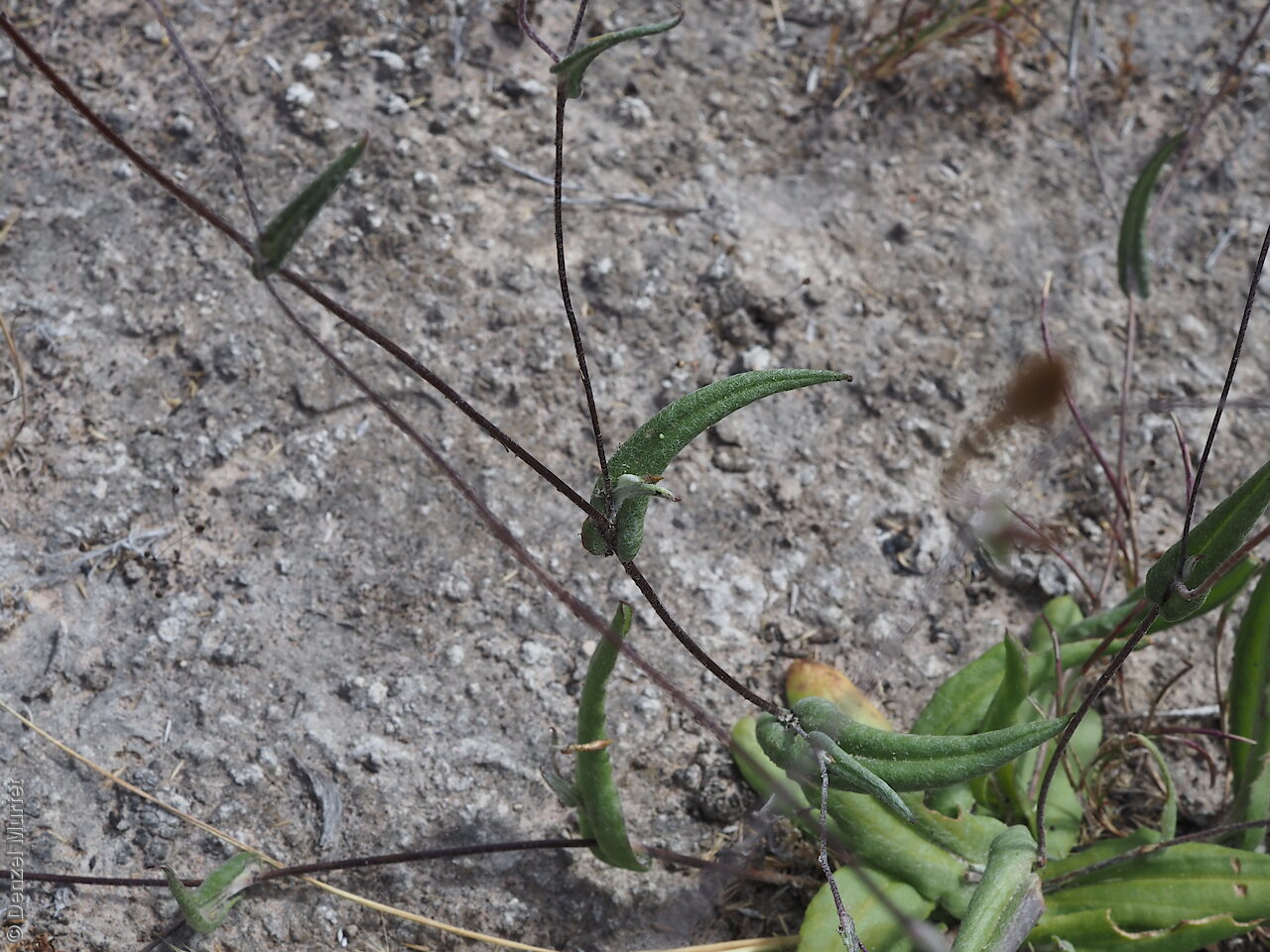
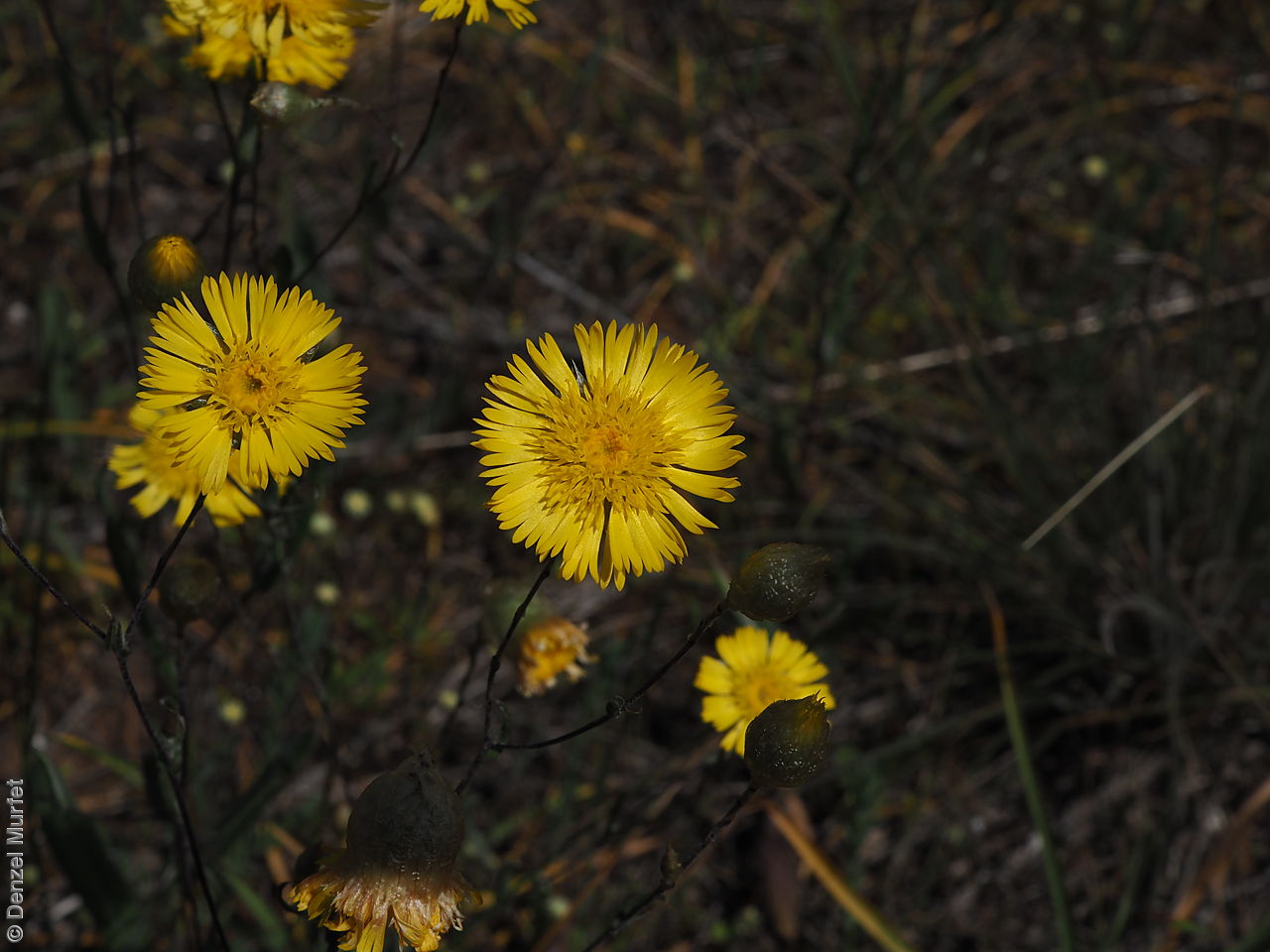
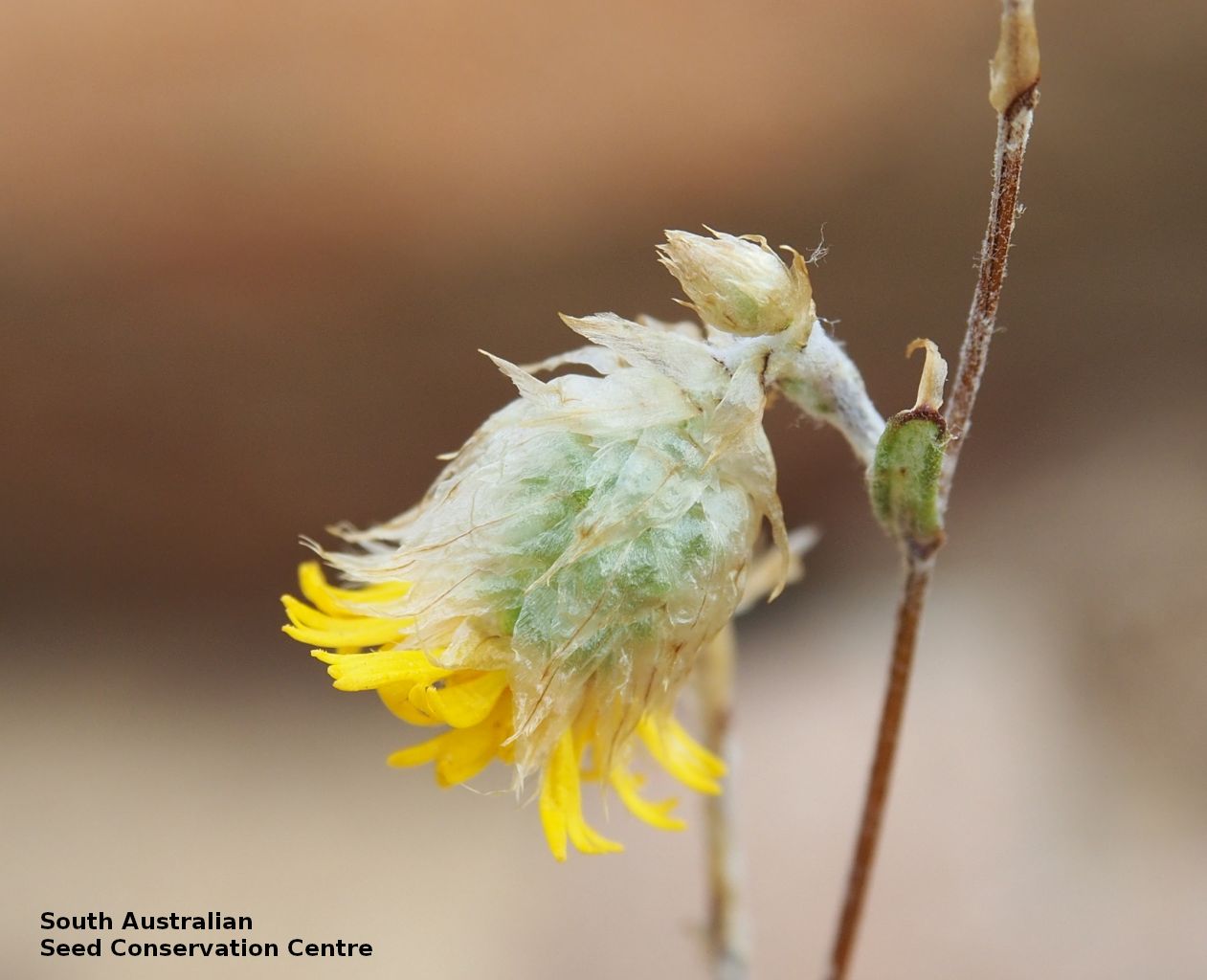
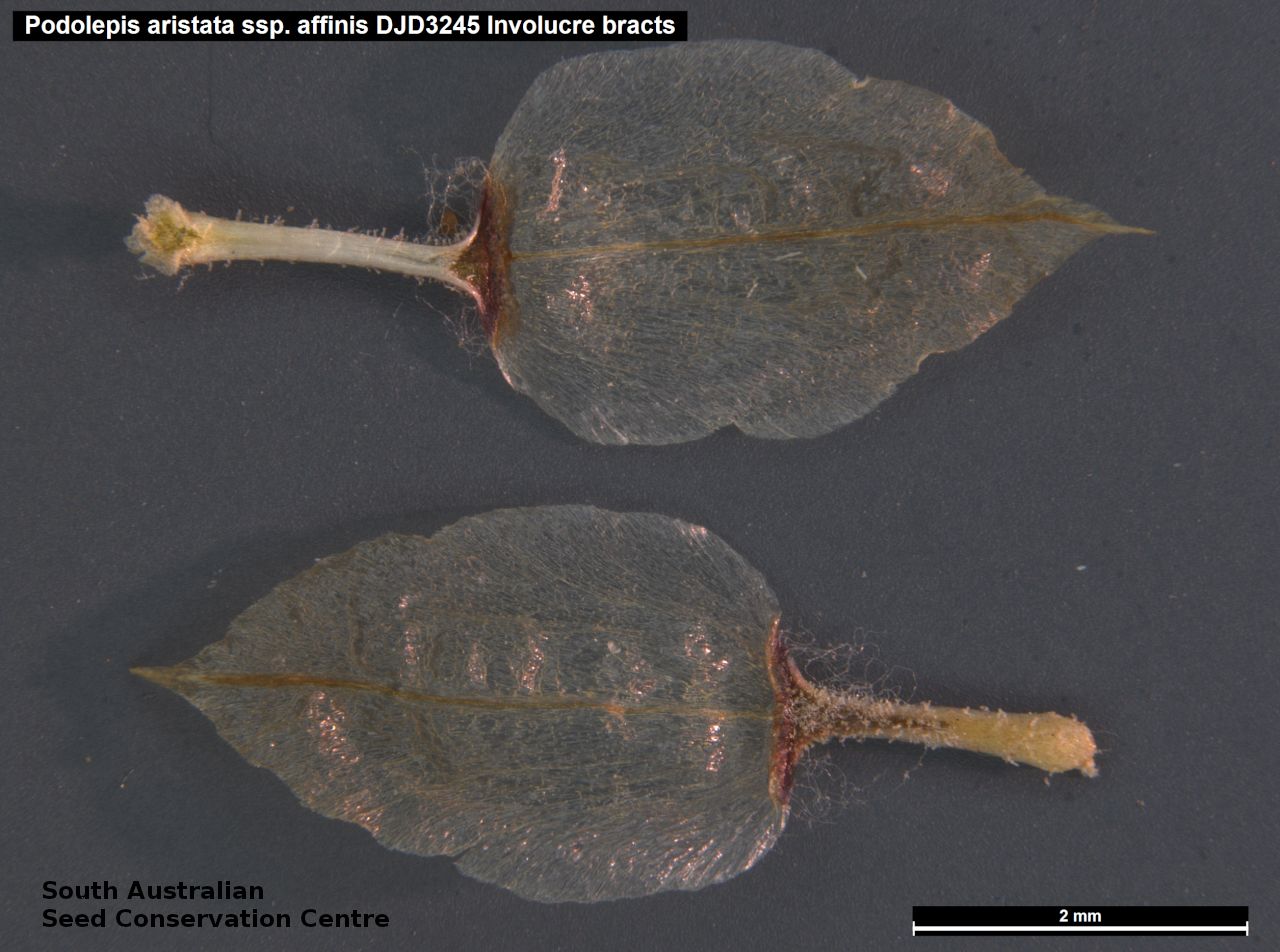
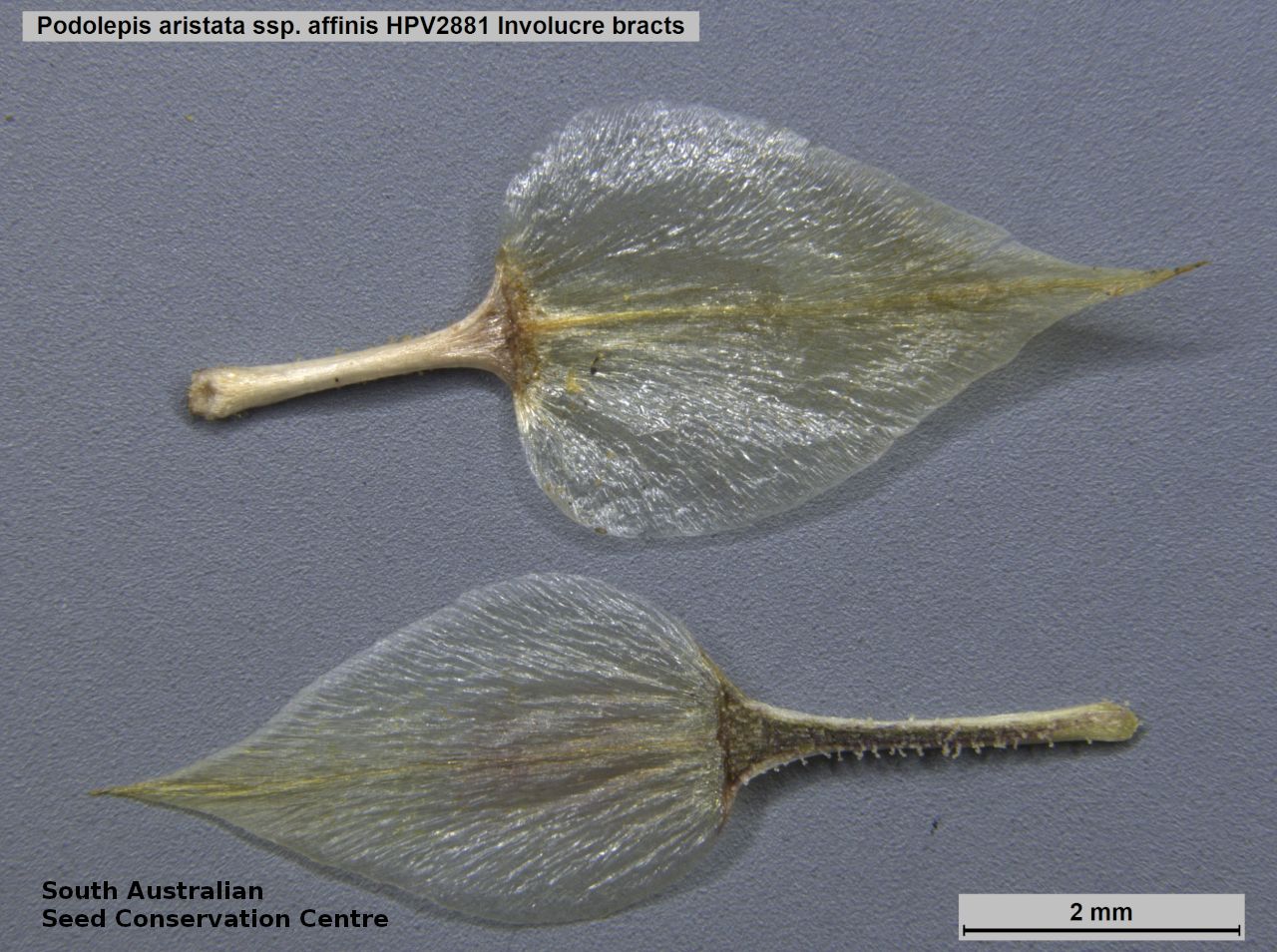
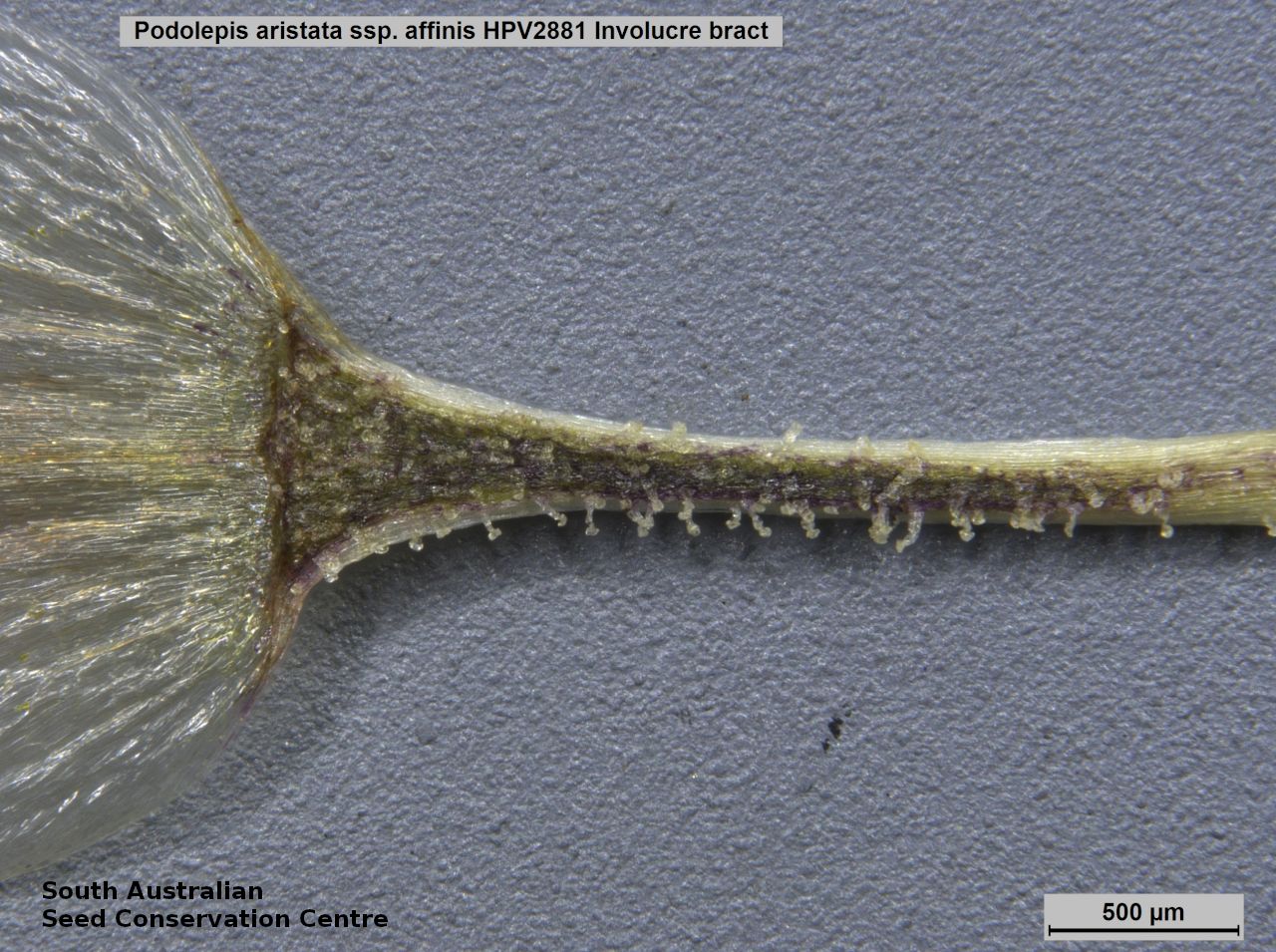

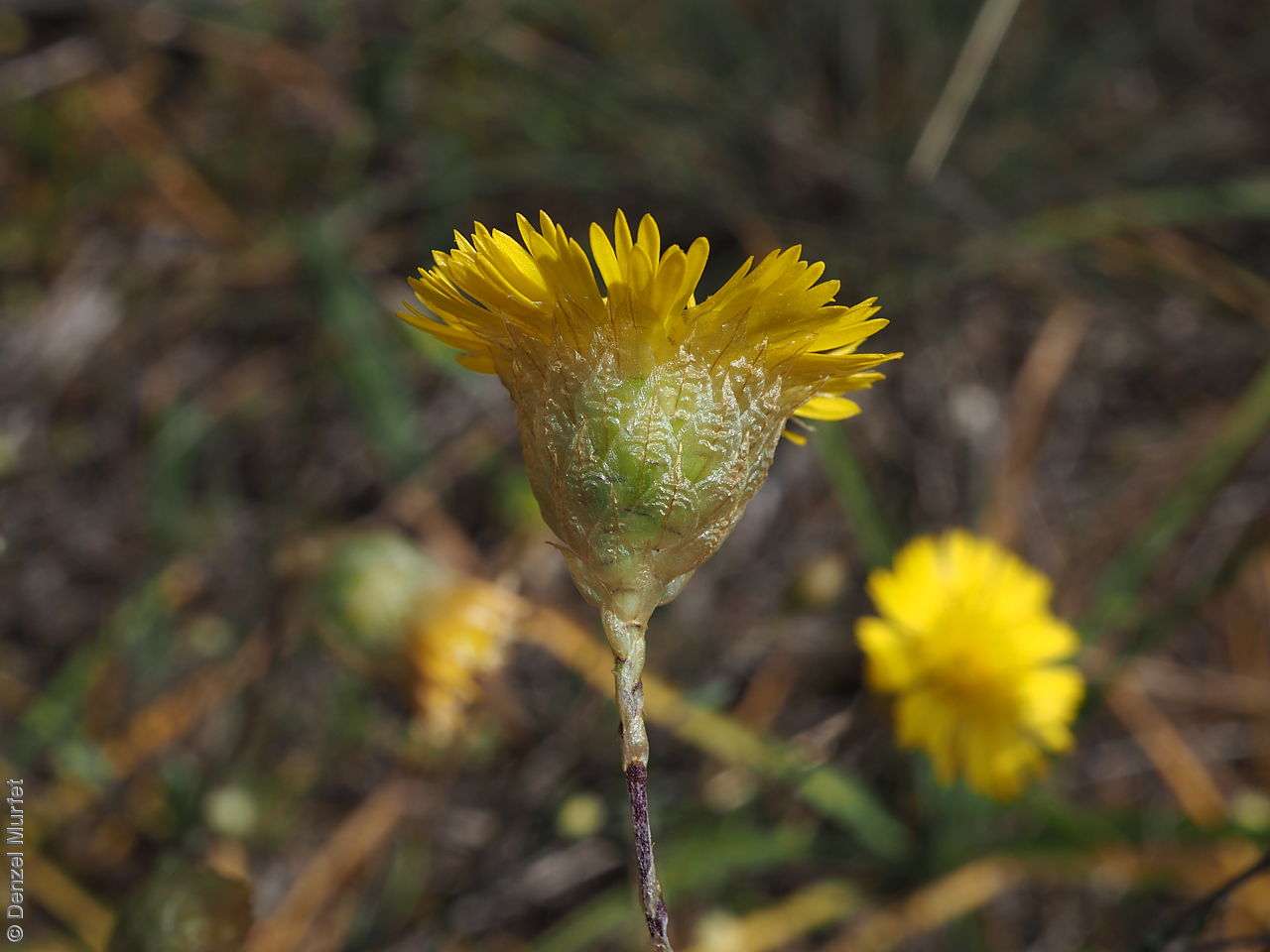
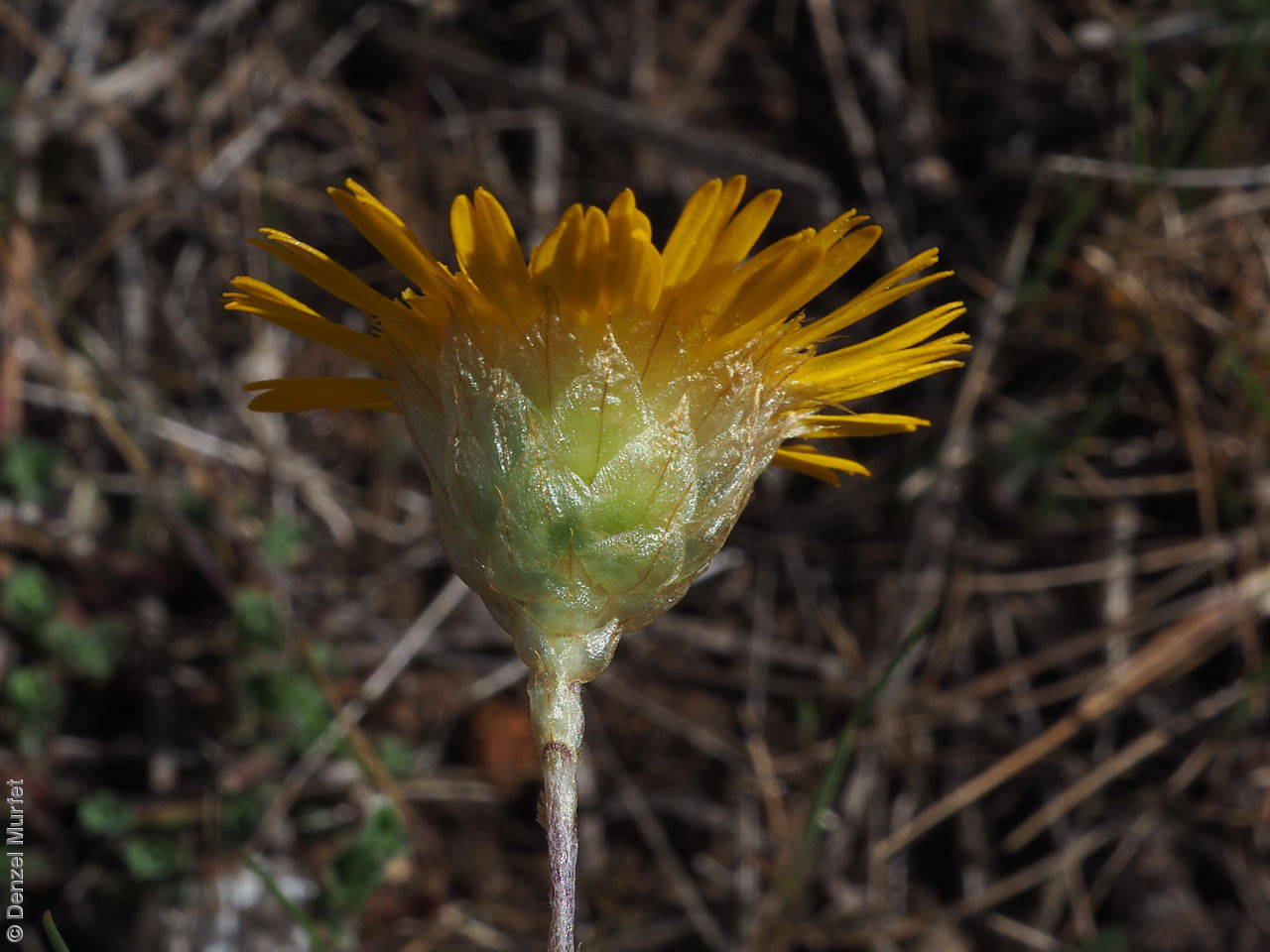


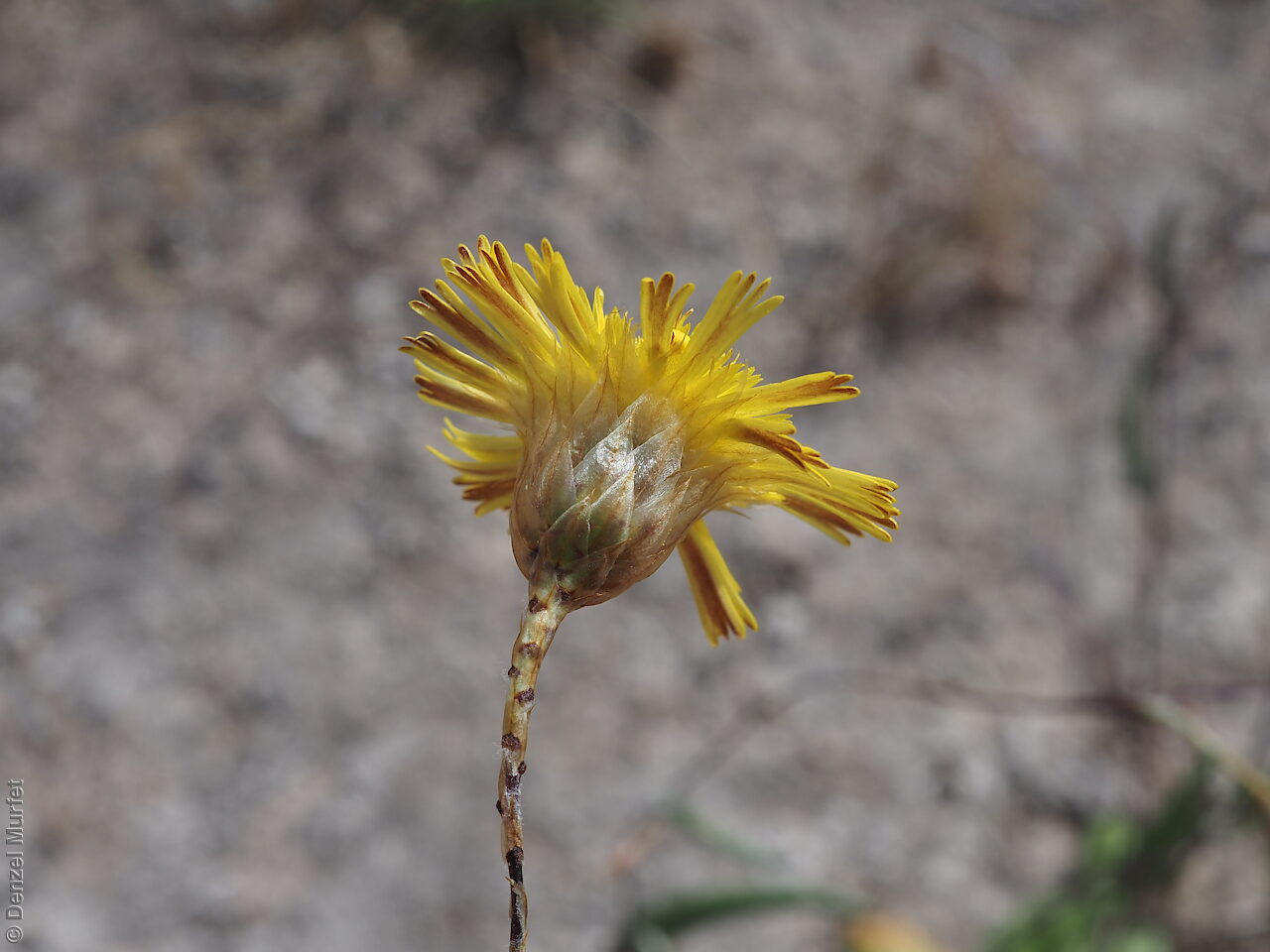
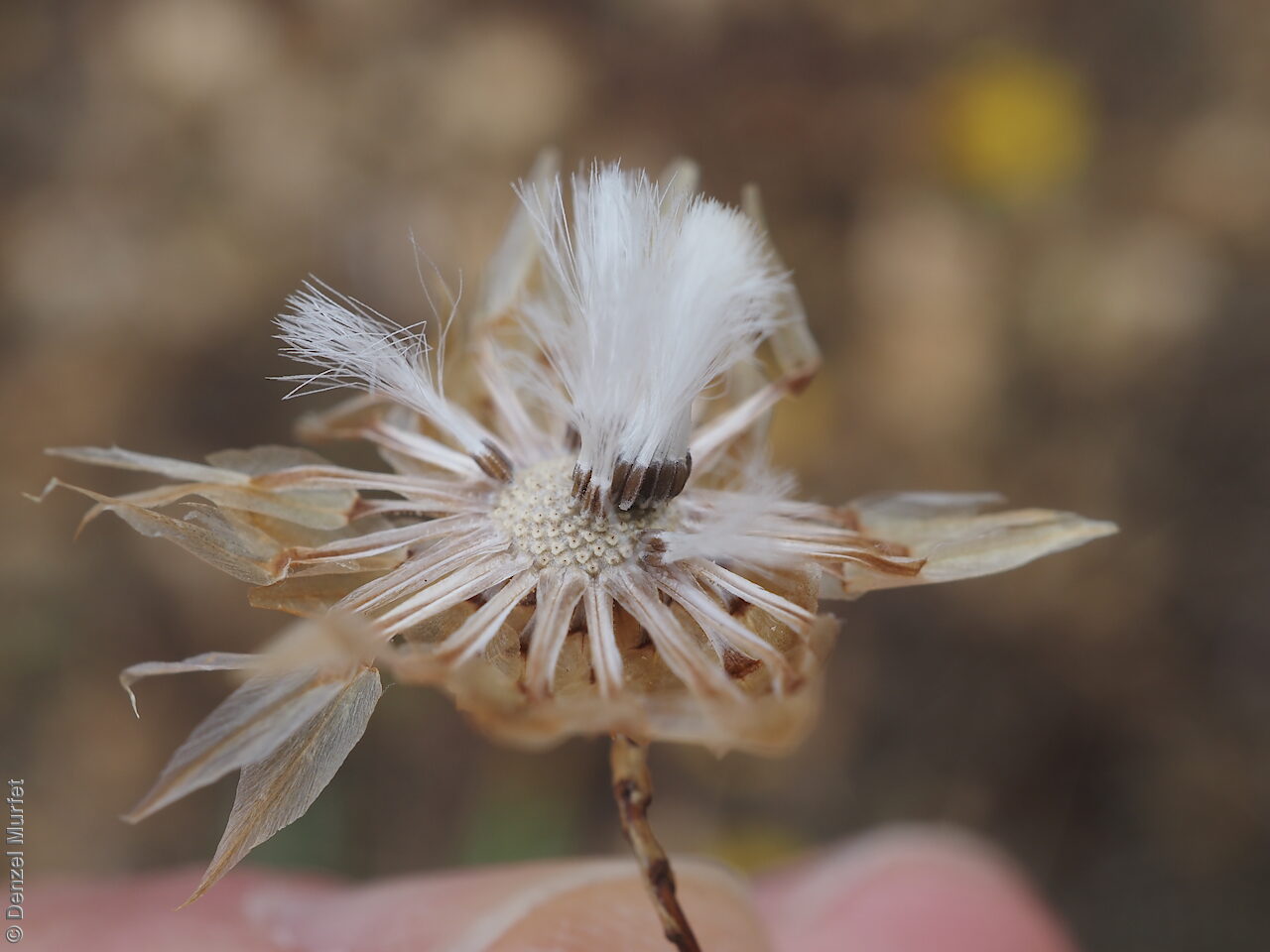
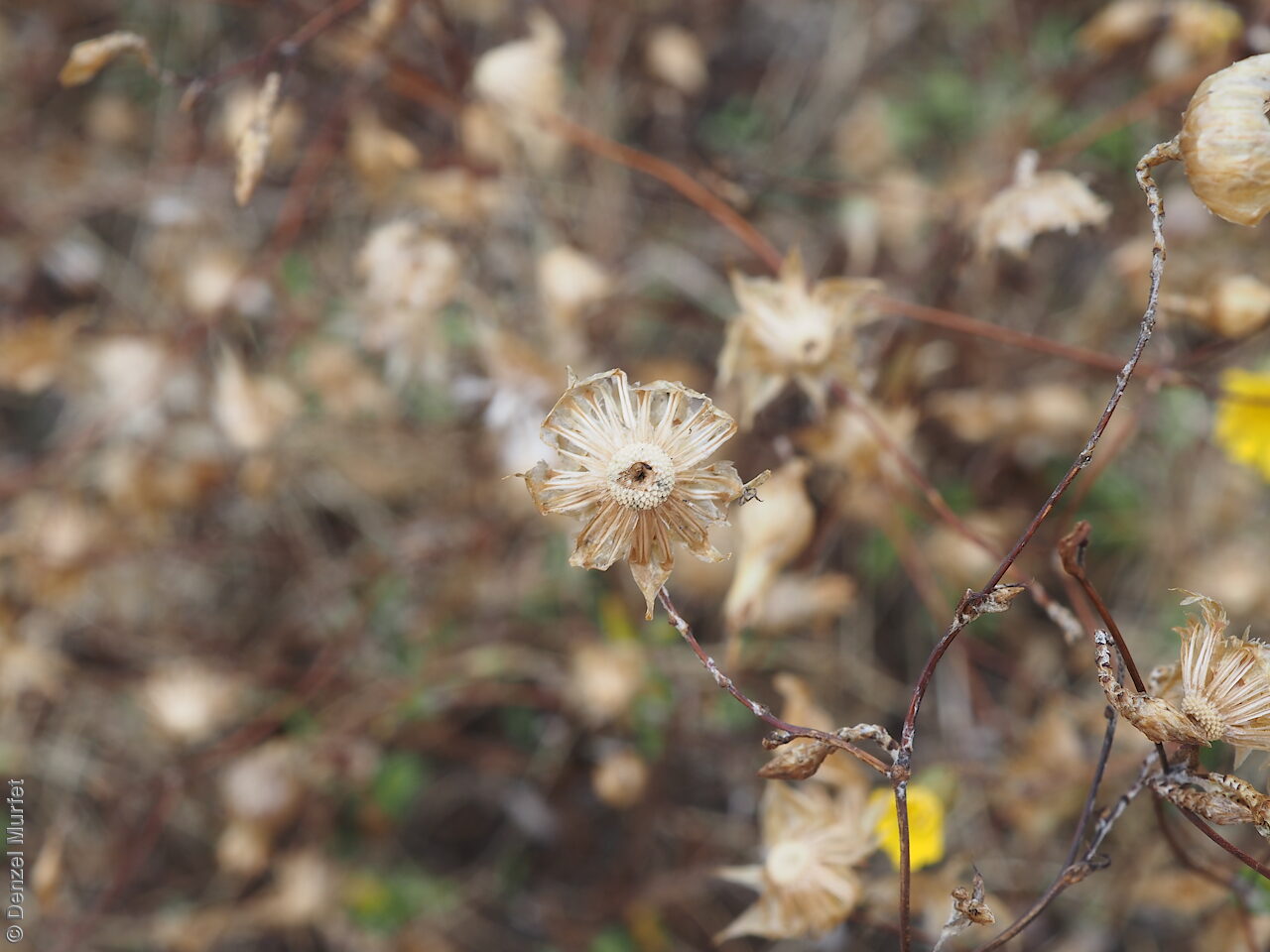

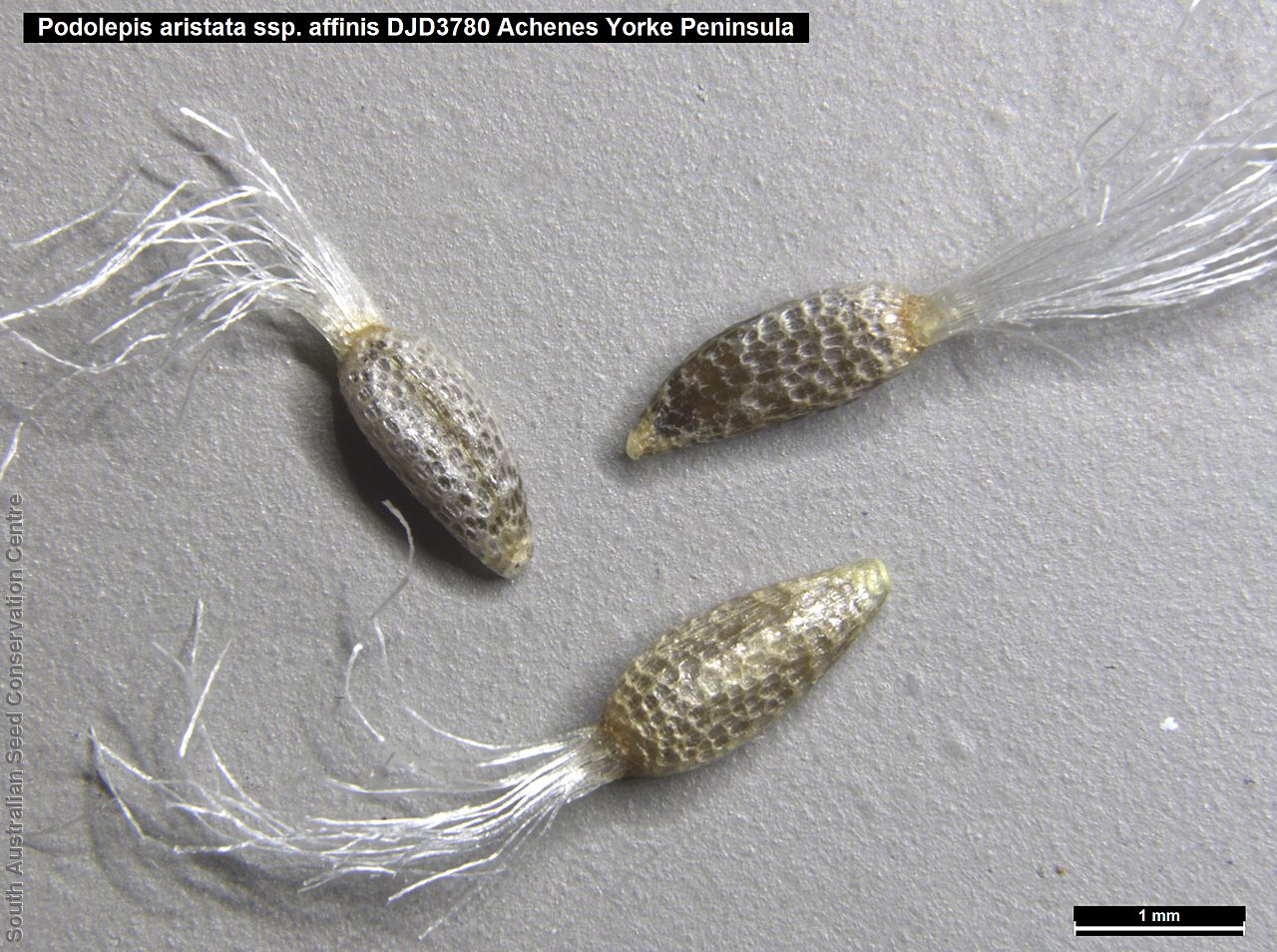
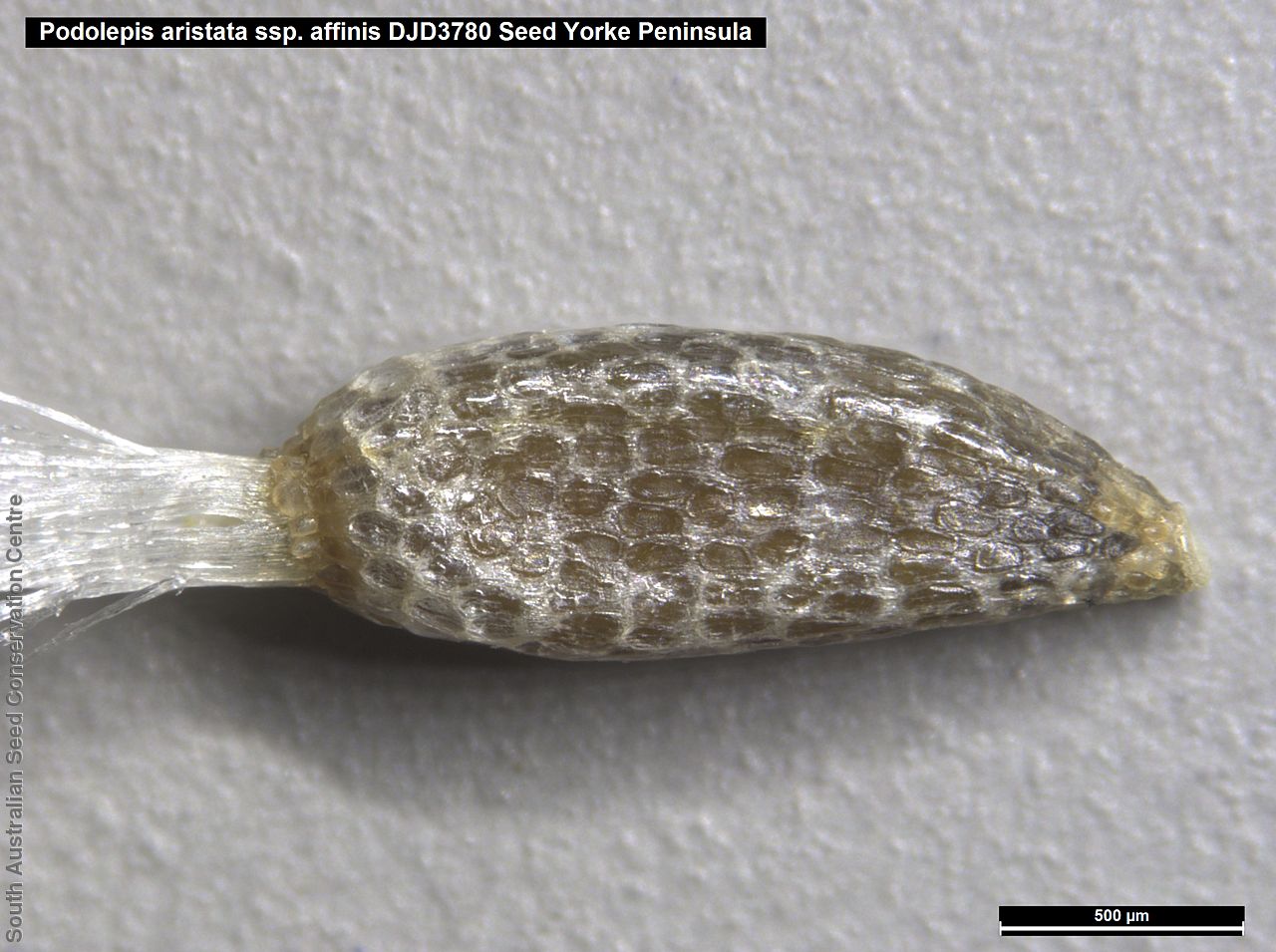
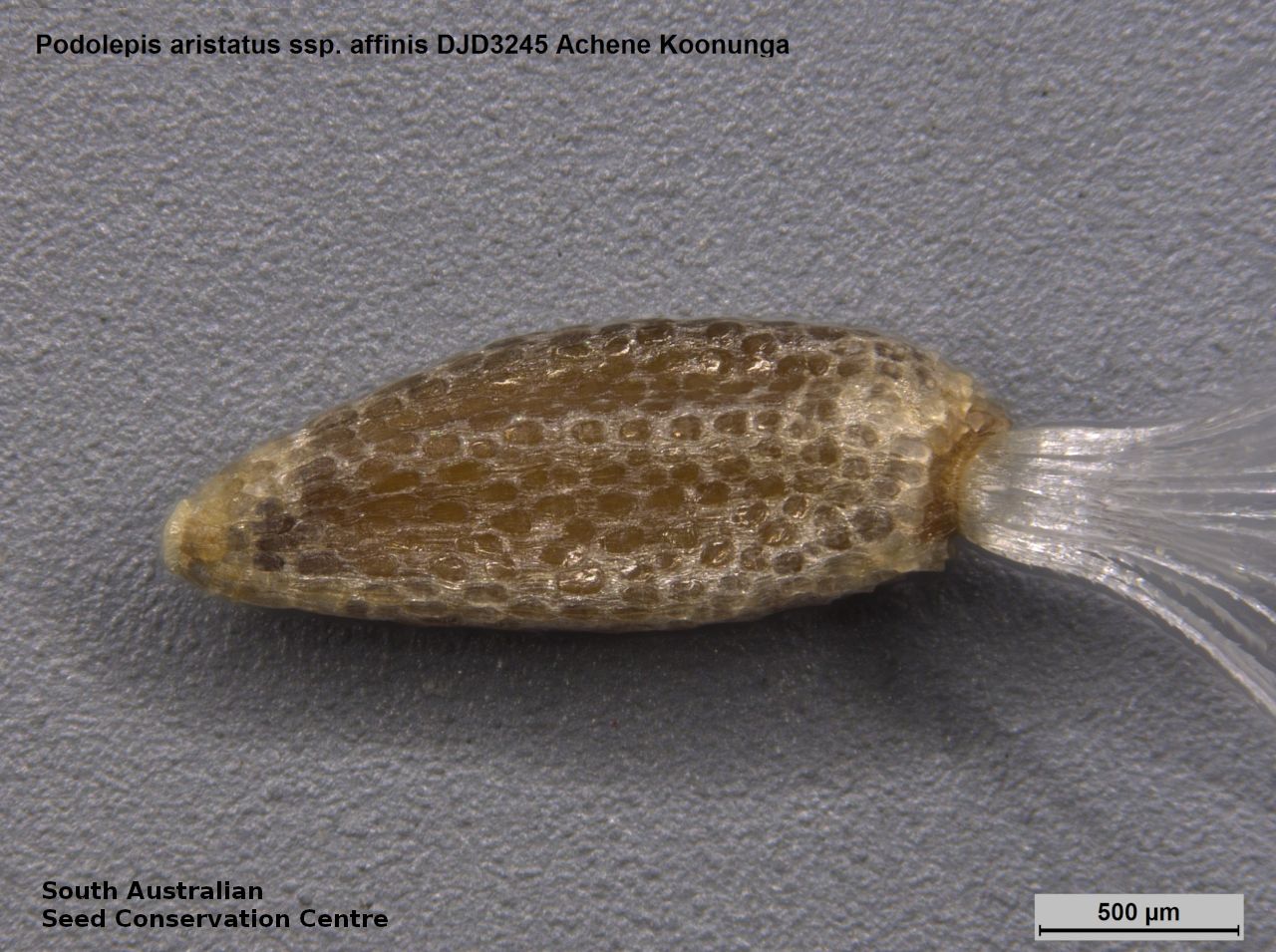
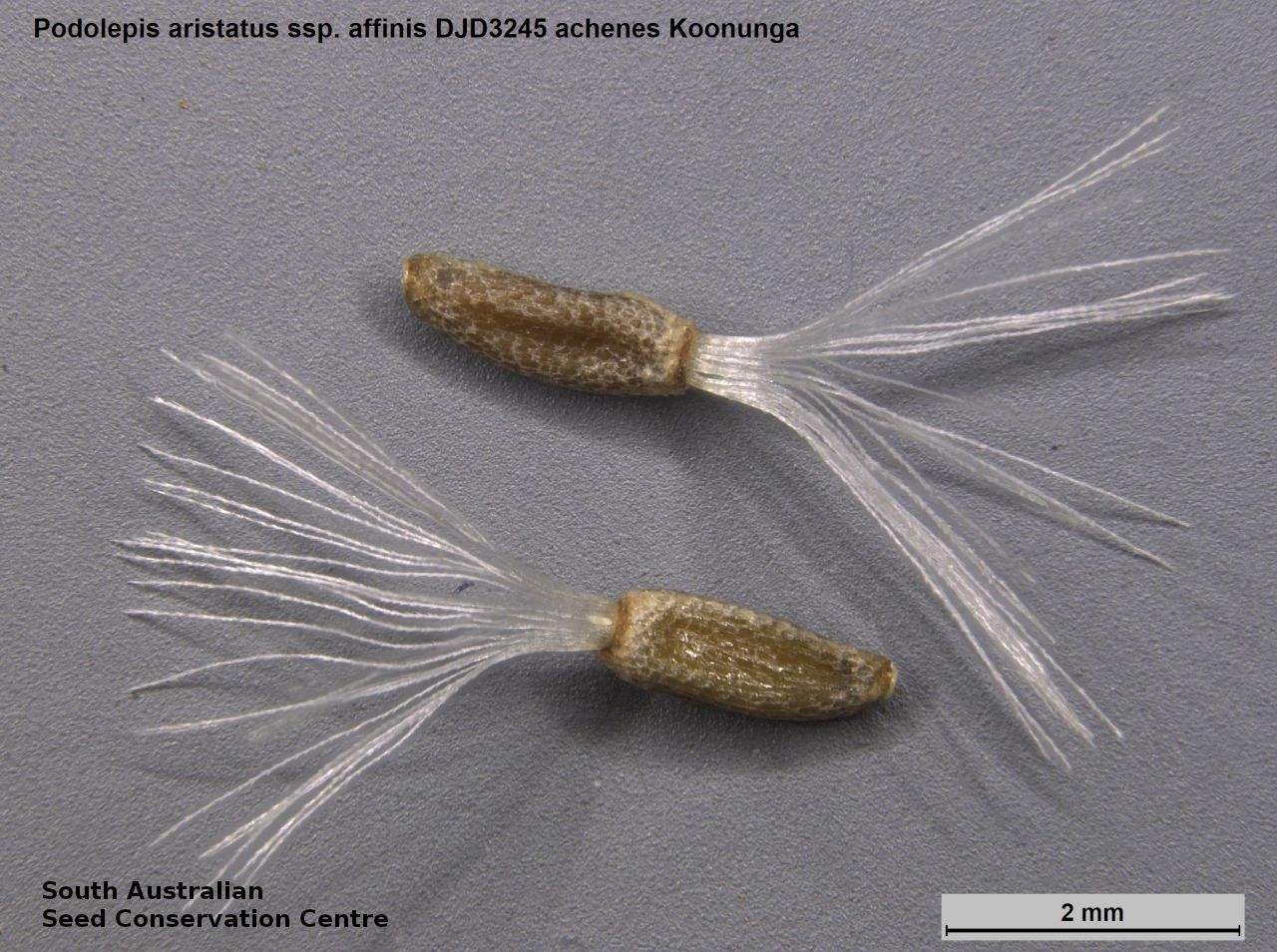
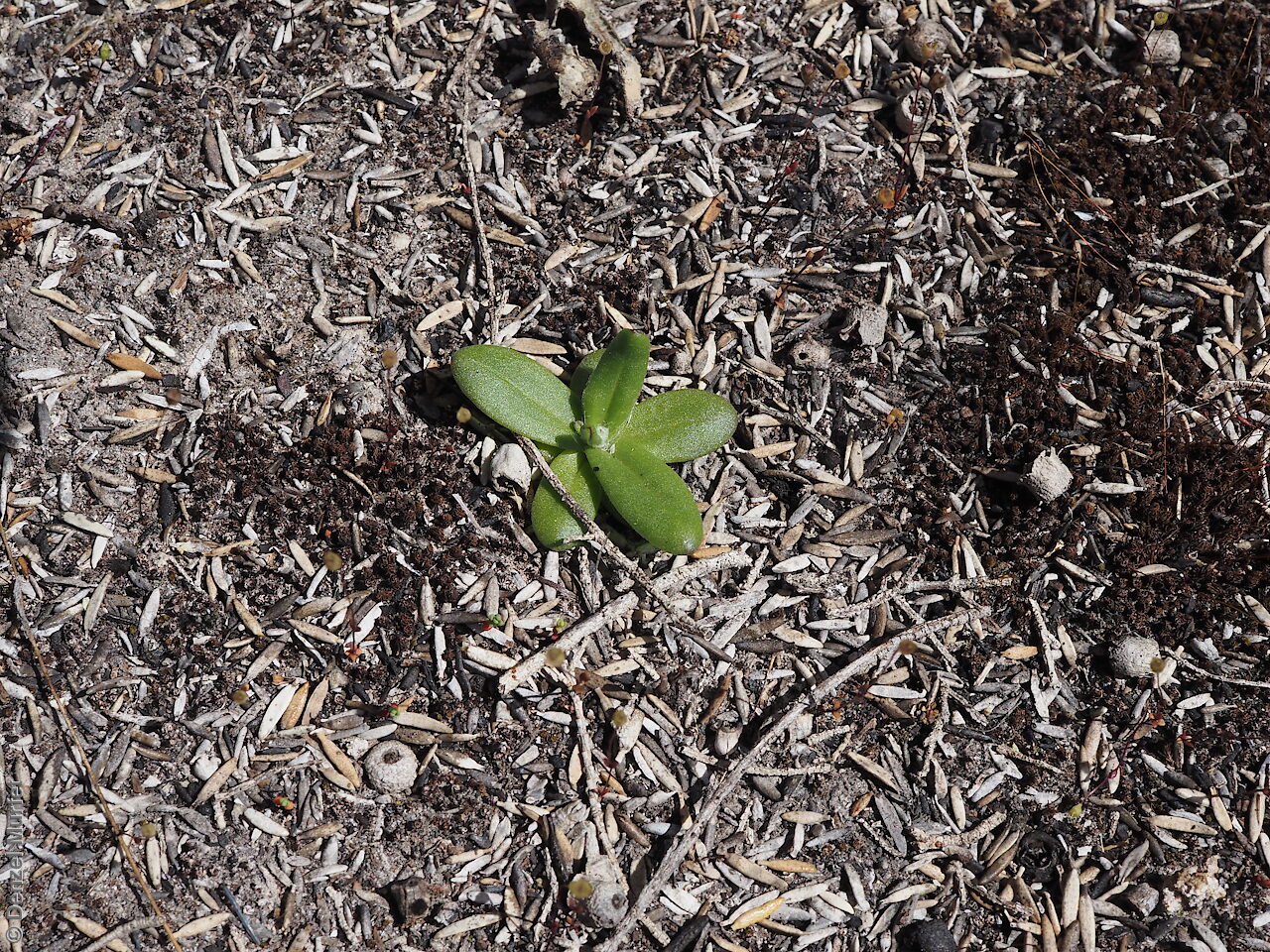

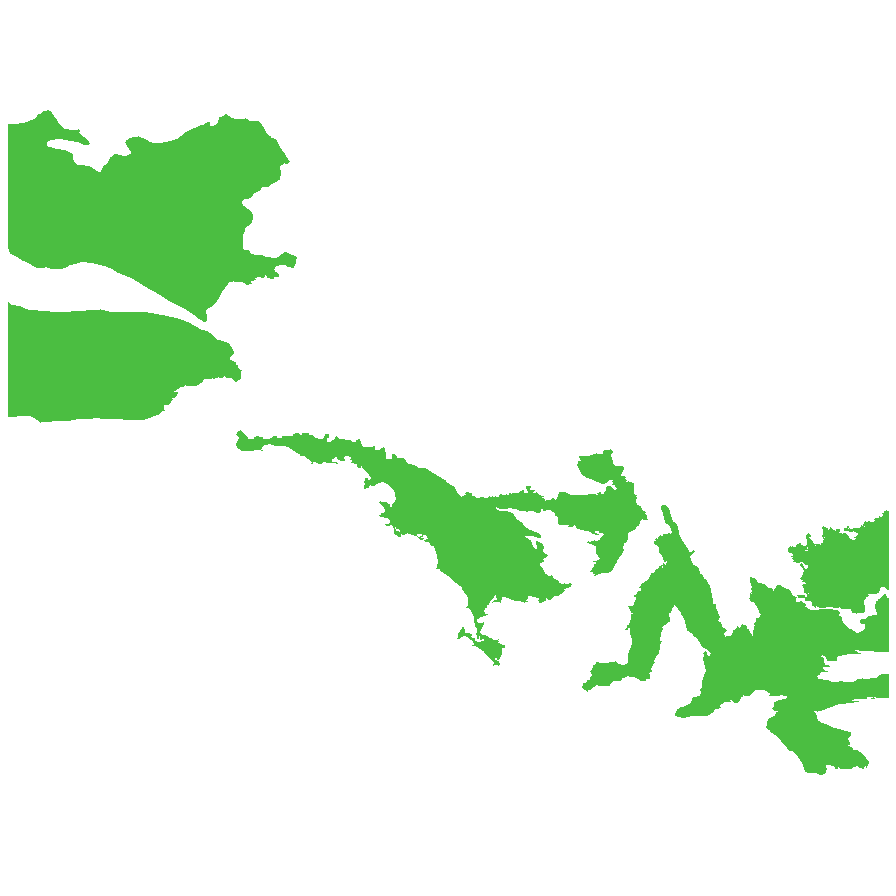
Botanical art
Prior names
Podolepis canescens, partly
Podolepis affinis
Common names
Button Podolepis
Grey Copper-wire Daisy
Bright Podolepis
Etymology
Podolepis from the Greek 'podos' meaning foot and 'lepis' meaning a scale, referring to the stalked involucral bracts. Aristata from the Latin 'arista' meaning bristle or awn, referring to the involucral bracts which are abruptly contracted into long acuminate points. Affinis from Latin meaning related or allied to or similar to another species.
Distribution and status
Found scattered across the southern part of South Australia, growing in a range of habitats including mallee, chenopod scrubland and woodland. Also found in Western Australia, Queensland, New South Wales and Victoria. Native. Common in South Australia. Common in the other States.
Herbarium regions: North Western, Lake Eyre, Nullarbor, Gairdner-Torrens, Flinders Ranges, Eastern, Eyre Peninsula, Northern Lofty, Murray, Yorke Peninsula, Southern Lofty, South Eastern, Green Adelaide
NRM regions: Adelaide and Mount Lofty Ranges, Alinytjara Wilurara, Eyre Peninsula, Northern and Yorke, South Australian Arid Lands, South Australian Murray-Darling Basin, South East
AVH map: SA distribution map (external link)
Plant description
Small annual herb to 40 cm tall with one to several brown to reddish, wiry, hairy stems. Leaves woolly, oblanceolate to 12 cm long. Involucral bracts many-seriate with slender linear, glandular claws and lanceolate to ovate lamina to 10 mm long; base obtuse to truncate. Florets yellow. Flowering between August and November. Fruits are white fluffy daisy-head. Seeds are brown ovoid seed to 2 mm long and 0.7 mm wide, covered in small tubercules, with long feather-like pappus at one end. Seed embryo type is spatulate fully developed.
Seed collection and propagation
Collect seeds between November and January. Collect heads that are fluffy. Either pick off the whole heads or use your finger and pull off the seeds from the head. Mature seeds will come off easily. Place the heads in a tray for a week to dry. No cleaning is required if only pure seeds are collected. If heads are collected, then rub the heads gently with your hands to dislodge the seeds. Viable seeds will be fat and hard. Use a sieve to separate the unwanted material. Store the seeds with a desiccant such as dried silica beads or dry rice, in an air tight container in a cool and dry place.
| Location | No. of seeds (weight grams) | Number of plants | Date collected | Collection number Collection location | Date stored | % Viability | Storage temperature |
|---|---|---|---|---|---|---|---|
| BGA | 17,000 (9.7 g) | 100+ | 30-Oct-2015 | DJD3245 Murray | 2-May-2017 | 90% | -18°C |
| BGA | 6,400 (1.98 g) | 100+ | 24-Oct-2018 | DJD3780 Yorke Peninsula | 24-Apr-2019 | 90% | -18°C, -80°C |
Number of plants: This is the number of plants from which the seeds were collected.
Collection location: The Herbarium of South Australia's region name.
% Viability: Percentage of filled healthy seeds determined by a cut test or x-ray.